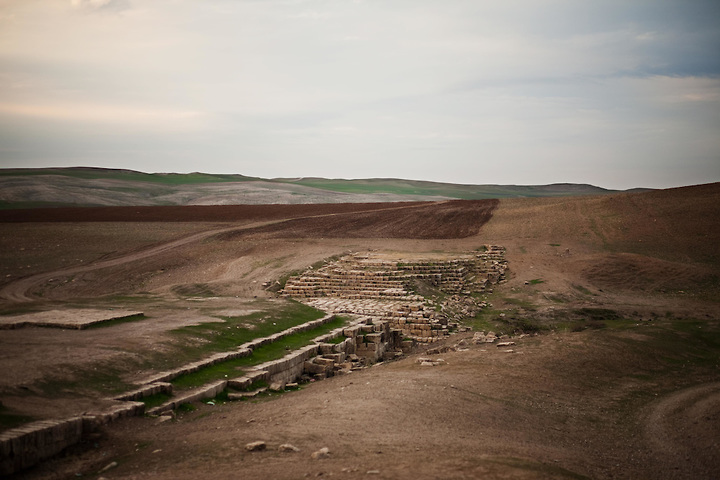


3000 years ago [700 BC] King Sennacherib, of Assyria, had his slaves and soldiers and workers build the first known stone aqueduct. This conduit allowed water to flow freely over a very gentle slope for roughly 20 miles -- from the headwaters of the river Gomel down to his palace in Nineveh, not far from Mosul in Iraq. Apparently, some pieces of this stone channel are still visible.
The Hanging Gardens of Babylon were actually in Nineveh, the capital of Assyria, and were built by Sennacherib. They were watered from this same aqueduct.
Today we generally transport water in pipes, but often still use gravity, because it's free, and New York's Catskill Aqueduct is of this type.
A 1000 years before King Sennacherib, i.e., around 2000 BC, qanats were used for transporting water, notably by the Iranians, but also by the Chinese and others. A qanat is a hand-dug tunnel not far below the ground. If one wanted to make a qanat, as a home experiment, adjacent vertical shafts, maybe 20 or 30 feet apart, would be dug, and at a certain not very deep depth -- maybe 8 feet -- these shafts would be joined, by trial and error, horizontally, thus forming an underground conduit or pipe. At one end of the shaft would be the source -- typically a spring -- and the water would flow down the gently sloping tunnel to, maybe, a pond at the far end. People at any of the vertical shafts on the way would be able to lower their leather bags or buckets and take water out. No power would be needed for such gravity flow, of course -- except the power of one's muscles to lift the water out! In Iran, some qanats were as long as 30 miles, and there is a famous one (at Gonabad) that has been providing for 40,000 people for the past 2700 years.
We are so used to getting drinking water out of a tap, but where does it come from? Commonly, rainwater percolates down through the ground, and there ultimately comes a depth where the ground may be completely saturated. This is an aquifer, and one may then drill down and use the water from it. (The qanats, of course, never got down to an aquifer, because if so the poor workers gouging out the horizontal part would have drowned.)
Much of Long Island's water comes from aquifers, but Manhattan's water comes from rain and snow-melt from the Catskill Mountains. It then travels along a gently-sloping concrete 'gutter', completed just 100 years ago. This gutter is an enclosed pipe, over 75 miles long -- and is our famous New York City Catskill Aqueduct. (Sennacherib's tunnel of 3000 years ago was similar, but did not go under things in the way that the NYC aqueduct goes under rivers, including the Hudson.) Also, because various towns along the way, such as New Paltz and New Windsor, pay to bleed some water off for themselves, our aqueduct is analogous to the 4000 year old qanats, where the farmers could dip their leather containers down the vertical shafts.
The Romans, of course, were the real experts on transporting water. Many of their glorious structures have stood for over 2000 years, in France and Italy and Spain. The first Roman one was the Aqua Appia, completed around 312 BC. Naturally, they were all gravity fed -- there were no energy sources to pressurize and move water, and indeed no strong pipes.

or register to post a comment.